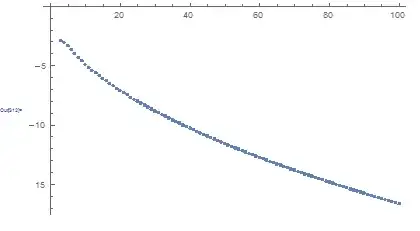I found this 2013 paper claiming to offer the first general continued fraction for $\gamma$ with regular pattern. It has almost exponential convergence. The $\log_{10}$ of absolute error is plotted below:

The error is of the order of $10^{-17}$ at $100$ steps of the algorithm.
The continued fraction it creates is a little bit complicated, starting with several terms having no apparent pattern:
$$\gamma=\cfrac{1}{2-\cfrac{1}{4-\cfrac{5}{16+\cfrac{36}{59-\cfrac{15740}{404-\cfrac{1489700}{30422-...}}}}}}$$
The next partial quotents grow very fast in absolute value.
The computation of partial quotents after $5$ is based on a complicated three order reccurence relation, which is described in details in the paper on page 14.
First, we define:
$$q_n=\sum^{n}_{k=0} \left( \begin{matrix} n \\ k \end{matrix} \right)^2 k!$$
Then we define the few initial values $d_1=-1$, $d_2=-2$, $d_3=-5$, $d_4=8$ for a $3^{rd}$ oder reccurence relation for $n \geq 3$:
$$(n-1)(n-2)d_{n+2}=$$
$$=(n-2)(n+1)(n^2+3n-2)d_{n+1}-n^2(2n^3+n^2-7n-4)d_n+n^4(n-1)^2d_{n-1}$$
Then the partial quotents $\frac{a_n|}{|b_n}$ will be defined for $n \geq 6$ as:
$$a_n=-\frac{(n-1)^2}{4}d_n d_{n-2}$$
$$b_n=n^2 d_{n-1}+\frac{(n-1)(n-2)}{2}q_{n-2}$$
Here is my implementation in Mathematica.
A0 = {{0, 1}, {1, 0}};
Af = {{1}, {0}};
Nm = 100;
q = Table[\!\(
\*UnderoverscriptBox[\(\[Sum]\), \(k = 0\), \(n\)]\(
\*SuperscriptBox[\(Binomial[n, k]\), \(2\)]\ \(k!\)\)\), {n, 1, Nm}];
d = Table[0, {n, 1, Nm}];
d[[1]] = -1;
d[[2]] = -2;
d[[3]] = -5;
d[[4]] = 8;
Do[d[[n + 2]] = ((n + 1) (n^2 + 3 n - 2) d[[n + 1]])/(n - 1) - (
n^2 (2 n^3 + n^2 - 7 n - 4) d[[n]])/((n - 1) (n - 2)) +
n^4 (n - 1)/(n - 2) d[[n - 1]], {n, 3, Nm - 2}];
a = Table[0, {n, 1, Nm}];
b = Table[0, {n, 1, Nm}];
b[[1]] = 2;
b[[2]] = 4;
b[[3]] = 16;
b[[4]] = 59;
b[[5]] = 404;
a[[1]] = 1;
a[[2]] = -1;
a[[3]] = -5;
a[[4]] = 36;
a[[5]] = -15740;
Do[a[[n]] = 1/4 (-(n - 1)^2) d[[n]] d[[n - 2]];
b[[n]] = n^2 d[[n - 1]] + 1/2 (n - 1) (n - 2) q[[n - 2]], {n, 6,
Nm}];
er = Table[0, {n, 1, Nm}];
Do[A1 = {{b[[n]], 1}, {a[[n]], 0}};
P0 = A0.Af;
A0 = A0.A1;
P = A0.Af;
Pf = N[P[[1, 1]]/P[[2, 1]], 20];
er[[n]] = Log[10, Pf - EulerGamma];
Print[n, " ", Pf, " ", Pf - EulerGamma], {n, 1, Nm}]
ListPlot[er]
1 arXiv:1010.1420 [math.NT]
